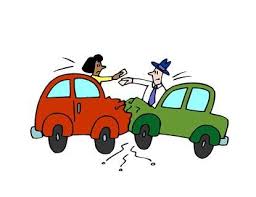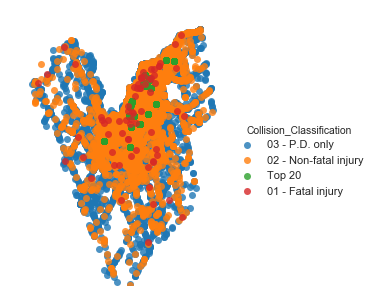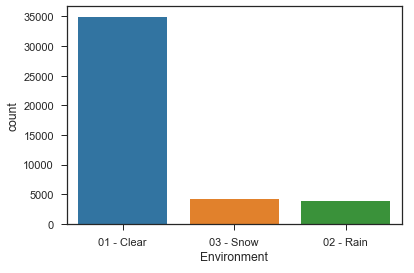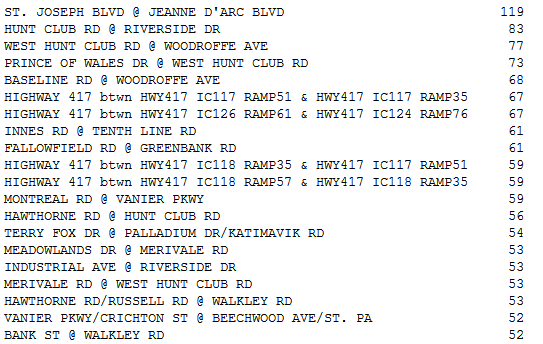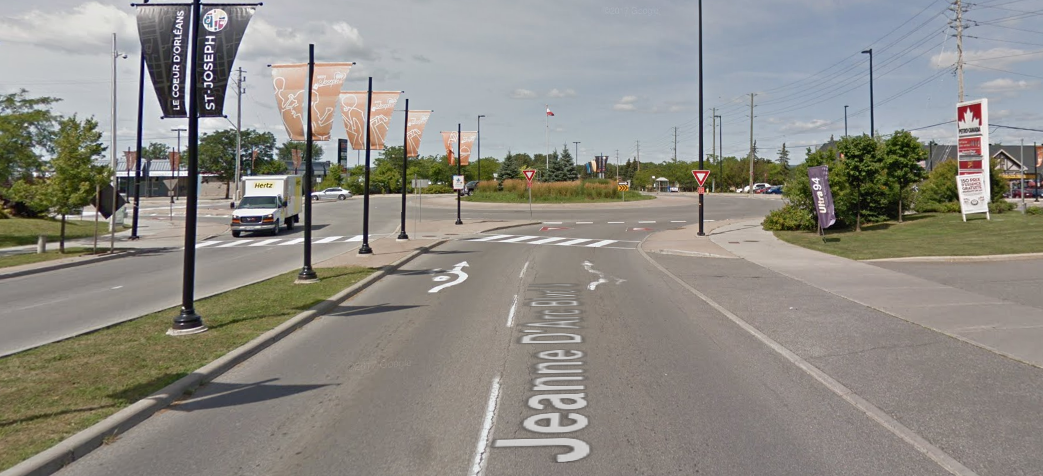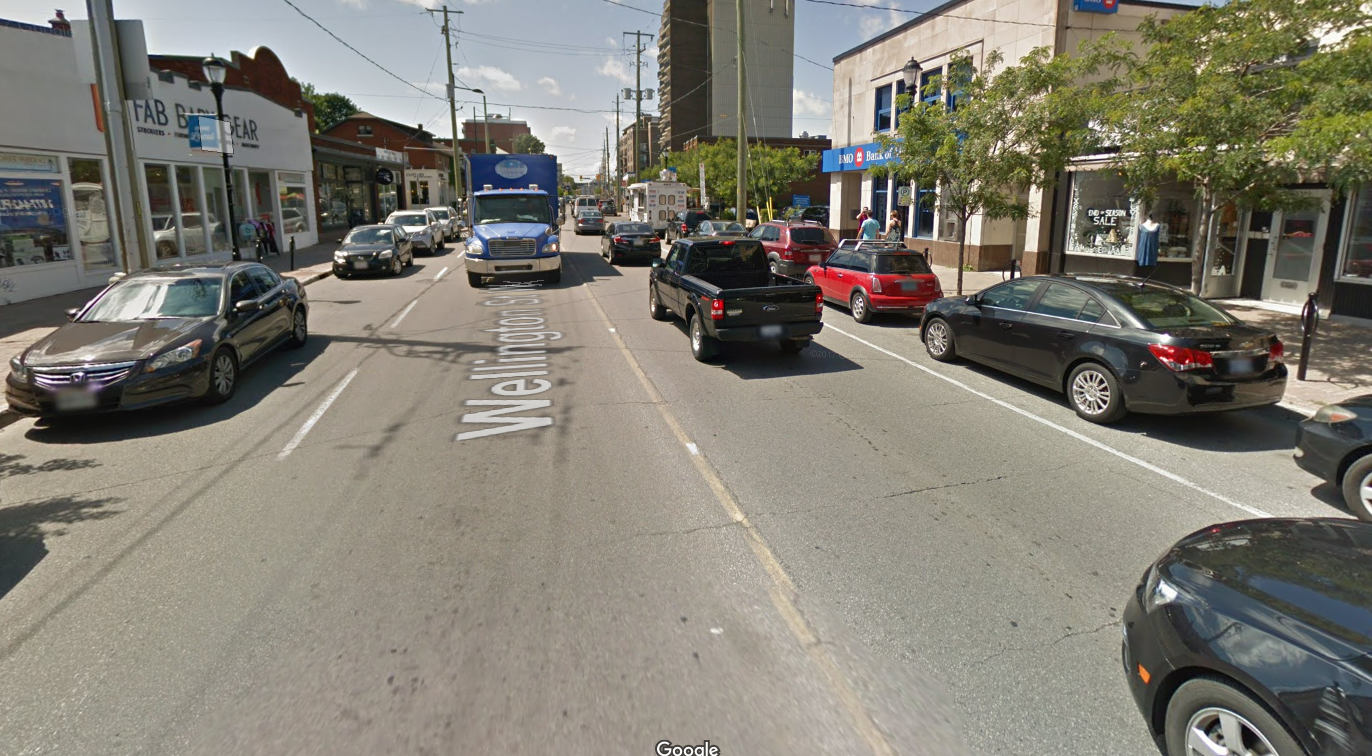To view the code used in this analysis, check here.
This analysis is on the Collisions datasets from 2014-2016.
Car accidents are, technically, preventable. Unfortunately, that does not mean they never occur.
Between 2014 and 2016, there were 43,944 collisions listed in the open datasets. This number is corroborated by the city's transportation reports.
We are talking about almost 15,000 accidents per year. While the vast majority of accidents are not fatal, they are costly. From simple automotive damage, to damage to public and private property, to serious injuries that require months or years of rehab, the cost of accidents can be very high.
Let's take a look at the data.
Paints a suprisingly accurate picture of Ottawa doesn't it? The blue dots are accidents where only property damage occurred. The orange dots are accidents where non-fatal injuries occurred. The green dots represent the 20 locations with the most accidents in the last three years. Finally, the red dots represent accidents where a fatal injury occurred.
Between 2014 and 2016, there were 71 fatal collisions recorded in the City of Ottawa. At least 71 lives cut short performing what to most is a daily necessity.
Here's a scary fact. In ideal conditions, i.e. dry roads and clear skies, the vast majority of fatal collisions occurred. Below is the number of fatal collisions, by type of weather or road conditions.
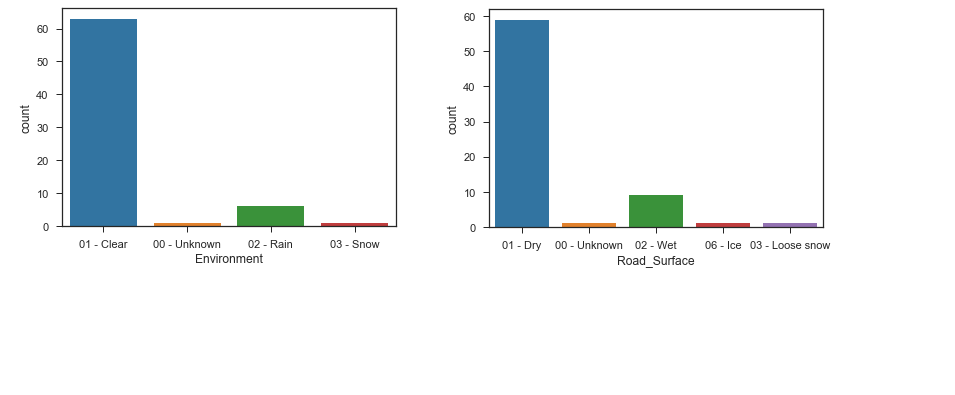
It is sad that the majority of traffic-related deaths occur during what one would consider "good" driving conditions.
This is mirrored by the list of accidents including non-fatal accidents. Is this owing to the fact that the majority of our days do not feature precipitation? Considering that per year, Ottawa averages more than 1/3rd of days with precipitation, perhaps that is not the case.
Indeed, many drivers feel safer in the summer, when perhaps the clear conditions seen in the summer may be a big distraction. Drivers feeling more confident could lead to drivers paying less attention to the road around them.
Let's take a look at those 20 locations with the most collisions between 2014-2016:
The first thing I notice here is that of the top 20 locations, all are either intersections, or the Queensway.
Interestingly, St. Joseph and Jeanne D'Arc has been either the number 1 or the number 2 location for accidents in the last 3 years. The roundabout has been open since 2010, yet clearly there has been some difficulty adapting.
The roundabout at St. Joesph and Jeanne D'Arc, from Google Maps
Another interesting feature of the locations with the most collisions is their suburban locations. With the exception of numbers 12 and 19 on the list (Vanier Pkwy - Montreal Rd. and Beechwood Ave), all of the locations on the list are suburban arterials (and the Vanier Parkway is built exactly the same). These are all wide, straight avenues with high-rates of speed and high volumes of traffic.
Now, the good news is this. When comparing these numbers against the AADT (Annual Average Daily Traffic) for each intersection, you can see that you will probably be safe driving through these interesections. With an AADT of 65,630 vehicles in 2016, the chances of getting into an accident at the interesection of Hunt Club and Riverside are about 1 in 560,000.
There are many ways cities can reduce the number of traffic incidents, and their severity. Road design plays a major factor in traffic speeds, as well as driver attention. Many of Ottawa's arterials are designed for a high-rate of speed, and are built to reduce outside distraction to drivers. This means there is very little on the sides of the street to look at, no parked cars, and few trees.
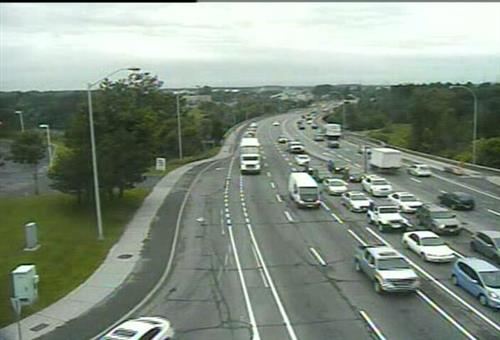
Hunt Club Road, an example of a major suburban arterial in Ottawa
The idea behind this design choice is that reducing driver distractions should allow them to focus more on the road. In reality, this type of street can often lead to excessive speed, and less attention paid to the actual road. Both of these, of course, are factors in many car accidents.
Preventing accidents starts with street design. Creating a safer road is as simple as increasing driver discomfort. When a driver feels pressured by their environment, they will be more aware of their surroundings, which therefore will make them less likely to crash.
For an example, think of driving down Wellington Street West in the summer.
Wellington Street West, from Google Maps
Narrow lanes, busy pedestrian crossings, bikes zipping up and down the street and parked cars with doors opening increase a drivers' level of discomfort.
This forces the driver to focus more on their surroundings, to avoid any incidents on the road, thus improving safety for all.
Realistically, we will never be able to fix all our arterials to be like this. The advent of self-driving cars and interconnected cars, however, offers even more help in preventing traffic accidents.
We are already seeing cars with self-driving features. One of the most critical to safety is the ability of a car to "look around", and let the driver know when another vehicle is within proximity.
As connections between cars become ubiquitous, cars will simply ping one another while in proximity, improving road safety for all users.
Fully automated self-driving cars would significantly improve road safety. Though fullscale adoption is still a long time away, the faster this can be achieved, the more road deaths that can be prevented.
These cars can be programmed to stay at slower speeds, increasing safety for any person involved in a collision. Their ability to constantly be picking up and dropping off users would mean a city would have far fewer cars on the road, once again increasing safety for all.
The City of Ottawa should start considering what kind of road standards need to be adopted to allow these vehicles to operate safely and effectively. While the vehicle is only in its infancy, the time is now to start considering its effects on the city, and how we can best respond to it.
